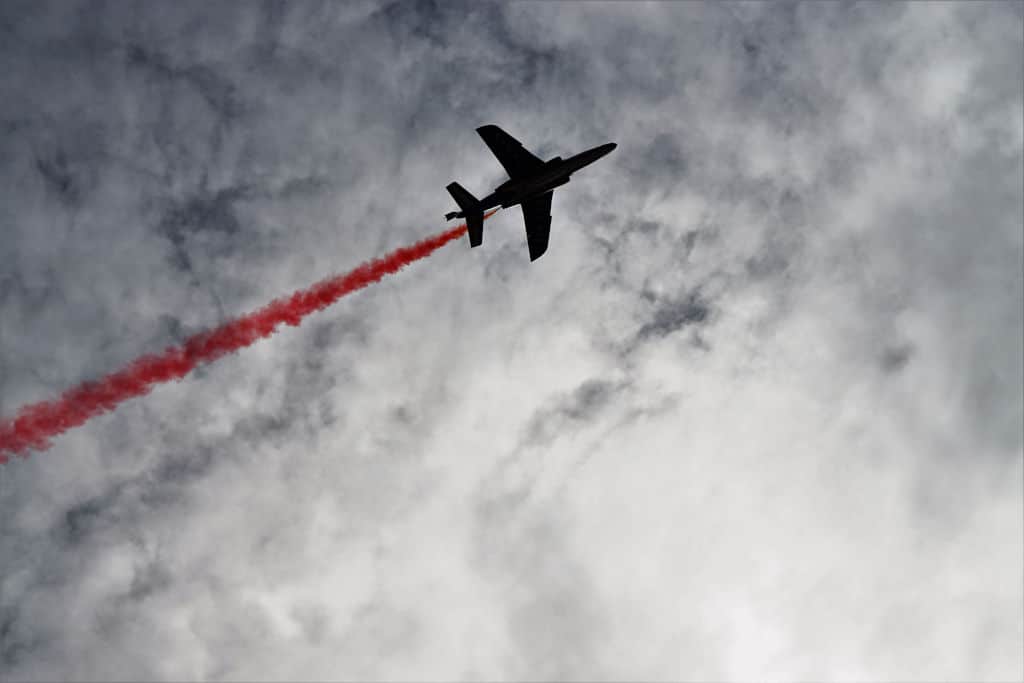The news of vehicular accidents has almost become a norm in the 21st century due to bad roads, drunk driving, and even vehicle defects. One report that is, however, not common is that of a mid-air collision.
A mid-air collision is a mishap in which two or more aircraft make unintended contact while in flight.
Even though occurrences of mid-air collisions are low, the fatalities can be terrible, killing hundreds of people at a goal.
According to a report, from 1989 to 1999, there were 1.5 mid-air collisions on average per year. According to another report by the General Aviation Joint Safety Committee, there were 43 reports of mid-air collisions involving general aviation operations in the United States. This resulted in 79 fatalities from 2016 to 2021.
There have been different mid-air collisions for years now. However, the 1996 Charkhi Dadri mid-air collision stands out as the deadliest mid-air collision in aircraft accident history.
The mid-air accident over Charkhi Dadri, west of New Delhi, occurred on November 12, 1996. The planes involved were a Saudi Arabian Airlines Boeing 747-100B flying from Delhi to Dhahran, Saudi Arabia, and a Kazakhstan Airlines Ilyushin Il-76 flying from Chimkent, Kazakhstan, to Delhi.
All 349 occupants of both airplanes died in the disaster, making it the deadliest mid-air collision. It is regarded as the third most fatal aircraft accident in aviation history.
Most importantly, tiny personal aircraft or helicopters, also known as general aviation aircraft, are involved in most mid-air incidents.
A recent example of a mid-air collision involving a general aviation craft is the crash over Boulder County, reported by 9NEWS. 9NEWS reported the incident happened on a fine and bright Saturday morning, leading to the deaths of 3 passengers.
In aviation accidents that involve mid-air collisions, it is essential to know the cause of the crash. Aviation accident investigators are typically brought on board to investigate the cause of the incident.
The use of a demonstrative exhibit like mid-air collision animation may be precious in court. This is because visualization is vital for a proper understanding of technical explanations

Illustrating The Causes of Mid-Air Collision With Litigation Animation
The Federal Aviation Regulations see and avoid rule established specific “rules of the road.” It specifies who has the right of way when two airplanes are coming at each other head-on, convergent, overtaking, and landing.
A mid-air collision frequently results from one or more pilots breaking one or more of those regulations. Due to variables like speed, weather, eyesight limitations, and human ability ceilings, applying these laws can be highly difficult.
It has also been noticed that mid-air collisions frequently occur close to airports where there are many aircraft and limited airspace. It also happens often in places known for air traffic, usually by general aviation crafts.
Here are some of the causes of mid-air collisions:
- Inadequate instruction from the air traffic controller
Every time an aircraft collides with another in mid-air, at least one pilot is unaware of another craft nearby. The lack of knowledge may be from the air traffic controller’s inadequate instruction regarding the airspace’s obstacles.
A mid-air collision may result from an air traffic controller’s error. This can happen if a plane is instructed to land on the same runway as another plane is taking off.
The court held the air traffic controller to have been at fault in the 1976 Zagreb mid-air collision, which led to the deaths of 176 people.
In a case involving poor control, legal animation can be used to showcase the direct effect of inadequate instruction on how the pilot flew the plane.
- Poorly trained pilots
The disaster may be attributed to corporate carelessness if a business fails to adequately train its pilots to be wary of other aircraft or cancels its flights during periods of poor visibility.
Pilot error, or generally speaking, one or more pilots ignoring the other aircraft, is the most frequent cause of a mid-air accident. Unfortunately, most of the time, at least one pilot would have been able to spot the oncoming aircraft in time to prevent a mid-air collision.
The most crucial thing to remember about a mid-air collision is that no pilot or aircraft type is safe. An unskilled pilot could overlook keeping an eye out for other planes. An experienced pilot might have taken the same route so frequently that they are less alert to sudden changes.
- Tunnel Vision
Another potential cause of mid-air collisions is empty-field myopia (tunnel vision). Empty-field myopia occurs when there are no nearby objects for the eyes to focus on. It causes the eyes to not focus on anything, even if it does reach the field of vision. Pilots frequently experience tunnel vision.
Tunnel vision can be animated to showcase how this condition can cause a pilot to be unaware of a coming catastrophe.
- Environmental and natural factors
Environmental factors like sun glare or flying over a highly populated area with many buildings can cause a mid-air collision. They can conceal an adjacent aircraft until an accident is imminent. Sometimes, turbulence can also lead to the collision of aircraft in the sky.
- Defective parts
Whatever might be the cause of the aircraft’s mid-air collision, it is the responsibility of experts to determine the cause of the crash. Sometimes, the collision may have been caused by a defect in the aircraft. Various possibilities are considered and examined to determine the precise cause of the incident.
With legal animation, it is possible to accurately portray the investigation results and help point out the person or agency responsible for the gross loss of lives that must have occurred during the crash.

Conclusion
Expert witnesses explaining the cause of a mid-air collision to the jury might be a mammoth task. The technicalities involved in the mechanics of a plan and its operation can be quite incomprehensible for a layman. However, with mid-air collision animation, the pain can be taken away.
Fox-AE specializes in creating causation animation that can serve as demonstrative exhibits for any kind of case. Mid-air collision cases aren’t left out. We work with attorneys and expert witnesses to clearly highly and illustrate the cause of an accident. Be it defective aircraft parts, tunnel vision, environmental factors, or any other factor that led to a mid-air collision, our forensic animators are capable of recreating it for use as a demonstrative exhibit.





